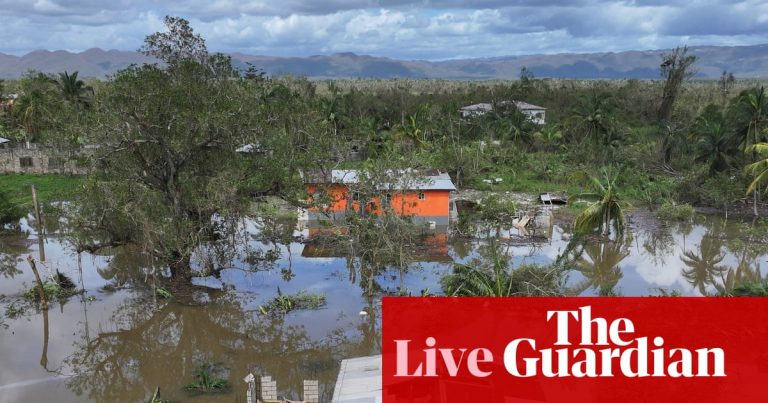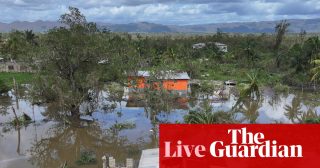In October 2023, leaders, scientists and policymakers from the Amazon, Congo and Borneo‑Mekong basins met in Brazzaville to ask a stark question: how to protect the planet’s remaining tropical forests from accelerating destruction. The meeting mattered to those present, yet drew little attention beyond central Africa, says Prof Simon Lewis of Leeds and UCL, co‑chair of the Congo Basin Science Initiative (CBSI). “It didn’t really fly as a conference or a set of policy proposals to better invest in that region of the world,” he said.
The Congo basin is the world’s second‑largest rainforest and a vital carbon sink, but it is often sidelined in global climate policy and funding. Spanning six central African countries and home to about 130 million people, the basin is sometimes called the “lungs of Africa.” Its canopy shelters thousands of species: around 10,000 plant species, of which roughly 30% are endemic, and endangered wildlife such as forest elephants, okapis, mountain gorillas and bonobos, notes ecologist Dr Yadvinder Malhi.
Beyond biodiversity, the basin shapes continental hydrology. Rainfall there feeds major river systems and helps sustain regions as far away as the Sahel and the Nile. “Africa is largely an arid continent,” Malhi says. “This fountain of water in the heart of the continent circulates and [also] ends up feeding into the Nile. That sustains the lives of millions of people.”
Much of the forest remains intact, and researchers have long regarded the Congo as the last big rainforest still functioning as a strong carbon sink — absorbing more carbon than it emits. But knowledge gaps complicate that conclusion. Lewis warns that recent data are lacking: whereas carbon uptake in the Amazon has declined over the past decade, equivalent, up‑to‑date measurements for the Congo are scarce.
A new report from the Science Panel for the Congo Basin, released as Cop30 opened in Belém, puts a figure on the basin’s role: it absorbs about 600 million tonnes of carbon dioxide a year, but that rate is falling as deforestation accelerates. Prof Bonaventure Sonké, panel co‑chair, said the findings aim to draw international attention and support to “the Earth’s most important but least‑studied tropical rainforest.”
Yet international funding tells a stark story of imbalance. A CIFOR‑ICRAF analysis covering 2008–2022 found that the world’s three main rainforest regions received $20bn in international funding over that period: $9.3bn (47%) to the Amazon, $7.4bn (37%) to south‑east Asia, and only $3.2bn (16%) to the Congo basin. Leading donors for central Africa were Germany (24% of funding), the Global Environment Facility (12%), the World Bank (9.4%) and the US (8.8%). About 30% of funds supported biodiversity protection and 27% environmental policy, while funding for scientific research accounted for a mere 0.1%.
The paucity of research funding shows up in academic output. A 2023 study comparing climate and biodiversity research across rainforests found roughly 2,000 published papers on the Congo basin versus 10,611 for the Amazon. “You’ve got this critical ecosystem, but there just aren’t enough local scientists working to understand it,” says Lee White, former environment minister of Gabon.
To address capacity gaps, White and Lewis have recommended training at least 1,000 PhD‑level scientists in Congo basin countries over the next decade. Local researchers and CBSI co‑chairs such as Raphael Tshimanga of the University of Kinshasa stress urgency: “We don’t want to wait 10 years… It needs to start happening now. How does this happen? By mobilising human resources and attracting funding. We don’t just want nice speeches at summits.”
Several factors help explain the neglect. Persistent perceptions of central Africa as unstable or corrupt — echoes of Joseph Conrad’s “heart of darkness” — have deterred investors and donors, says White. Corruption is a real concern, particularly in the Democratic Republic of the Congo (DRC), which contains about 60% of the basin. But those reputational arguments can also be used as an excuse for underinvestment. Republic of Congo environment minister Arlette Soudan‑Nonault calls that “the tree that hides the forest,” warning that it is “very easy and lazy to say that Africans are corrupt.”
Beyond reputation, practical obstacles complicate conservation and research: insecurity, poor infrastructure and limited institutional capacity. The DRC has faced intermittent conflict for decades, making large tracts of forest difficult to monitor and manage. Yet ministers argue this is not a reason to withhold support but rather an argument for targeted, sustained investment. Soudan‑Nonault frames the issue as one of justice and global self‑interest: the basin’s people “have tightened their belts so that the world can breathe — and we receive no compensation.”
Conservation advocates urge richer countries and global institutions to rebalance funding, boost scientific research, and build regional capacity quickly. The Congo basin’s forests are not only a regional resource but a global one: protecting them reduces emissions, preserves biodiversity and sustains hydrological cycles that affect millions beyond central Africa. Without more attention and investment, the world risks losing a crucial buffer against climate breakdown — and the region that bears disproportionate responsibility for keeping it intact will shoulder the costs.





